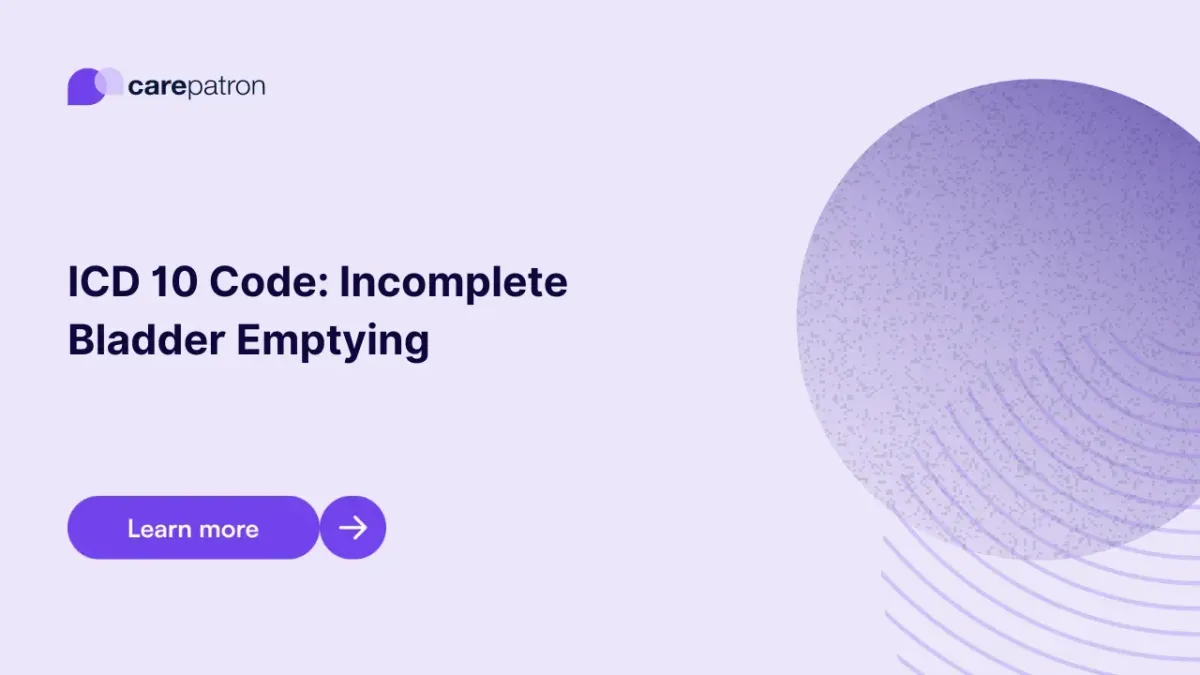
Incomplete Bladder Emptying ICD-10-CM Codes
Explore ICD-10 code R39.14 for incomplete bladder emptying. Learn billing details, symptoms, causes, and treatment options for urinary retention conditions.
Use Code
Commonly asked questions
Use the incomplete bladder emptying ICD-10 code (R39.14) when a patient presents with symptoms like urinary retention, weak stream, or the sensation of not fully emptying the bladder. It should be applied after a clinical evaluation confirms these symptoms and no more specific underlying diagnosis is initially identified.
Yes, the ICD-10 code R39.14 is billable and can be used for reimbursement and documentation.
Common treatments include medications to relax the bladder or prostate, catheterization, and surgery to remove blockages. In some cases, behavioral therapies and lifestyle changes are also recommended to improve bladder function.
EHR and practice management software
Get started for free
*No credit card required
Free
$0/usd
Unlimited clients
Telehealth
1GB of storage
Client portal text
Automated billing and online payments
